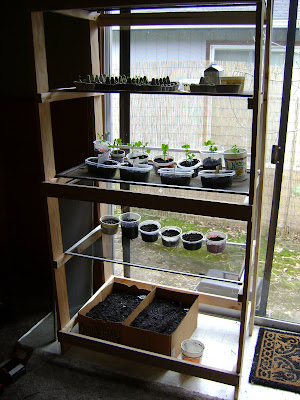We buy something, we forget about it, and it goes bad.
I try very very very very hard not to do this. I work with people who deal with food insecurity. I believe in sustainability. I hate waste. I think food is a precious gift. Yet despite all of these tenets I do find bizarre science experiments in the back of my fridge, and spend a fair amount of time convincing myself that the floppy carrots are OK to eat.
I will say that my commitment to composting makes things easier. At least I can take that bad food and put it to good use as worm food and soil. That said, there are some times when people determine that a food is not good to eat, but it need not be compost-bound. Today I am going to talk about one such food - garlic.
I LOVE garlic. It has medicinal properties, tremendous health benefits, and tastes amazing. However there are days when I just don't want to take the time to peel and chop it up into my food. I usually buy a bulb of garlic and get through only about 2/3 of it before it starts to move on. When I say move on what I mean is that it sprouts. You know, those tender green shoots that come out the top of the cloves. Once this happens the garlic IS edible, but not nearly as good. It tastes green, loses its bite, and is just not as appealing.
I realized this morning while making an omelet that the garlic in the kitchen was sprouted. I've been thinking about planting garlic for a while now, so I decided instead of composting it I'd put these babies in the ground! The problem: garlic is not included in the garden plan. I don't have space allocated for it. Hmmm...
 I'd been thinking about getting some container gardening going for a while now, but have been working mostly on the raised beds. This seemed like a great opportunity to get something going. When I lived in Utah, I had a garden that was 100% in containers - buckets, plant pots, milk crates, and cardboard boxes. What I found was that the plants in the cardboard did the best. I think it was because in the hot Utah sun the boxes held in moisture the best. Though Oregon is not hot like the Utah desert, I do know that it turns up the sun and temperature in the summer, so I decided to put my garlic into cardboard boxes.
I'd been thinking about getting some container gardening going for a while now, but have been working mostly on the raised beds. This seemed like a great opportunity to get something going. When I lived in Utah, I had a garden that was 100% in containers - buckets, plant pots, milk crates, and cardboard boxes. What I found was that the plants in the cardboard did the best. I think it was because in the hot Utah sun the boxes held in moisture the best. Though Oregon is not hot like the Utah desert, I do know that it turns up the sun and temperature in the summer, so I decided to put my garlic into cardboard boxes.Lovin' the Hop Czar Box!
 I cut the boxes to make them shorter. Garlic needs at least 6" of soil depth to yield well, so I cut the boxes to 10", and lined the bottoms with newspaper. I find that when planting in cardboard it helps to put the paper in the bottom so that less water gets lost out the bottom. I added 8"-9" of soil into the boxes on top of the newspaper. The soil we are using is about 50% potting soil, and 50% compost. It is very light, loamy, and drains easily. I find it great for plants once they grow, but know that when you are germinating in it you might need to water more often because it dries out very quickly.
I cut the boxes to make them shorter. Garlic needs at least 6" of soil depth to yield well, so I cut the boxes to 10", and lined the bottoms with newspaper. I find that when planting in cardboard it helps to put the paper in the bottom so that less water gets lost out the bottom. I added 8"-9" of soil into the boxes on top of the newspaper. The soil we are using is about 50% potting soil, and 50% compost. It is very light, loamy, and drains easily. I find it great for plants once they grow, but know that when you are germinating in it you might need to water more often because it dries out very quickly.I have made a personal commitment to plant all of my sprouted garlic from now on.


I planted the garlic in the boxes with 6" in between each clove. The planting depth is important for garlic - no more than 1-1.5" into the soil. Too close to the top and they don't root well, and too far underneath and they don't grow. As I was planting, the ones that had long sprouted "tails" I planted with the tip of the green sticking out of the soil. Be sure to plan the cloves right side up. The green sprouted end needs to point up, and the flat end that was attached to the rest of the bulb goes down.
At the food pantry I manage we have a whole bunch of potatoes that are sprouting. We are going to have to toss them per state laws (totally understand this), so I am going to bring a bunch of them home to cut up and do the same thing!
No comments:
Post a Comment